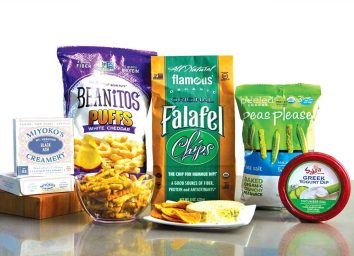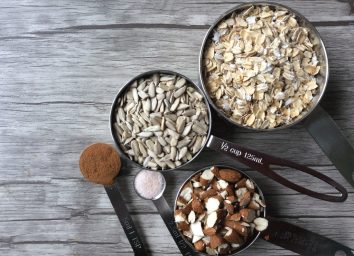14 Sneaky Types of Food With Bogus Serving Sizes
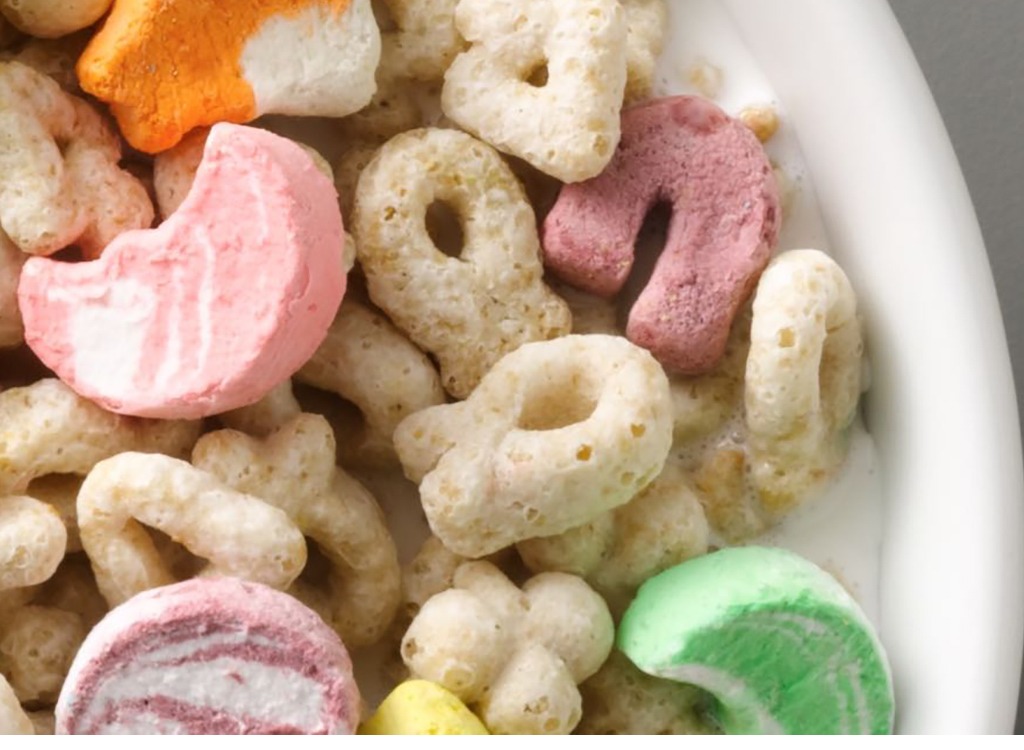
Picture it: You’ve just polished off a snack bag and flip it over (with fake-cheese-dusted fingers), only to realize you’ve just consumed two full servings and way more calories and fat than you imagined. Sound familiar?
It happens all too often, and that’s because serving sizes are wildly inaccurate reflections of what we actually consume. Companies intentionally do this so that when you glance at the package, the nutrition info for their product looks better than it really is. As a result? The damage is typically worse than we thought it would be. According to the FDA, “By law, serving sizes should be based on actual consumption and not ideal consumption.” And one of the major influences of consumption? Packaging.
In the serving size game, packaging is basically calling the shots. Packaging affects how much people eat and drink. So, even if a standard serving size of soda is 12 ounces, when you buy a 20-ounce bottle, you typically drink the whole thing—rather than stop 60 percent of the way through it. It also depends on how you serve the food. If you eat your ¾-cup serving size of cereal in a 2-cup bowl, it’ll look much smaller than it actually is. As a result, you’ll fill your bowl up more to make it look fuller. (This is precisely why research by Eat This, Not That! magazine advisor and director of the Cornell Food and Brand Lab, Brian Wansink, found that simply using a smaller plate or bowl could cut down on food served by 22 percent—it’s one of the 15 Ways to Break Your Bad Eating Habits).
Good news, though: The portion control problem may finally be solved! That’s because the FDA is updating the nutrition facts label. Serving sizes will be less misleading and will more accurately reflect what the package intends you to eat in one sitting. But since the new label won’t be required until 2018, we took it upon ourselves to reveal the true nutrition facts of some of the food groups that are the worst offenders, with examples for each. In some cases, you may have to double or triple the “recommended” serving size to get an accurate representation of what you’re actually eating! Be on the lookout for these sneaky serving sizes—and while you’re sleuthing, also watch out for these 16 Surprising Sources of Added Sugar.
Personal OrangeJuice Bottles
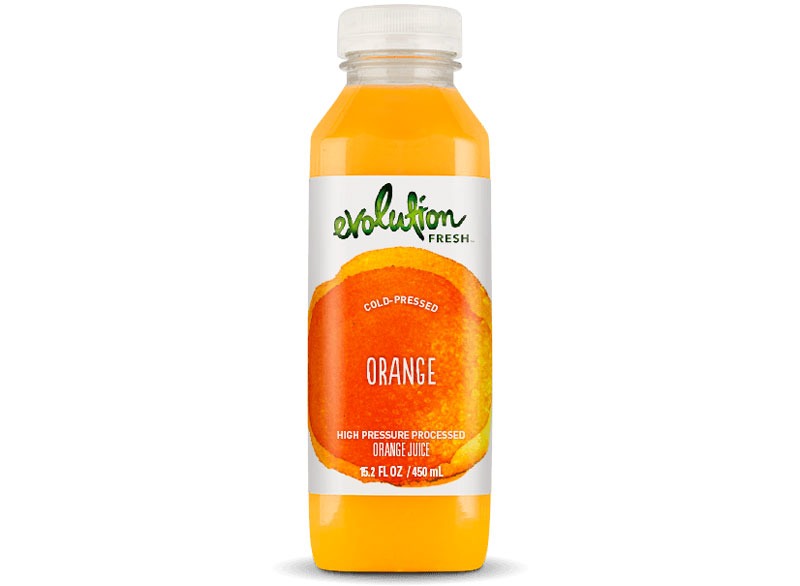
For Example: Evolution Fresh Cold-Pressed Orange Juice
What they say you’re drinking: 8 oz serving, 120 calories, 0 g fat, 28 g carbs (0 g fiber, 26 g sugar), 2 g protein
What you’re probably drinking: 15.2-oz bottle, 228 calories, 0 g fat, 53 g carbs (0 g fiber, 49 g sugar), 4 g protein
This morning mainstay might be bright and refreshing, but it’s loaded with sugar and relatively low in nutritive values besides vitamin C. Luckily, Evolution Fresh solved one of those problems. They cold-press their juices (as opposed to heat pasteurizing) to retain many of the nutrients that can be lost. But don’t let their health-halo marketing skew your keen eyes away from the label. A single serving has 26 grams of sugar—and a single serving is only half the bottle. While these grams may only be from fruit sugars and not added, regardless of source, sugars act the same way in your body. So guzzling down 49 grams of the sweet stuff in a single sitting can do some serious damage to your blood sugar levels if you don’t pair it with foods high in fiber, protein, or healthy fats.
Instant Noodle Packets
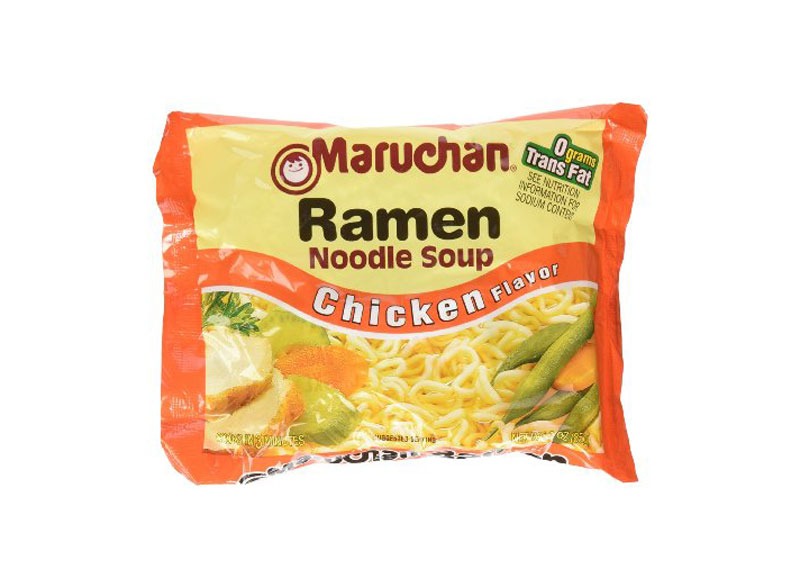
For Example: Maruchan Chicken Flavored Ramen Block
What they say you’re eating: ½ block, 190 calories, 7 g fat (3.5 g saturated fat), 830 mg sodium, 26 g carbs (0 g fiber, 1 g sugar), 4 g protein
What you’re probably eating: 1 entire block, 380 calories, 14 g fat (7 g saturated fat), 1,660 mg sodium, 52 g carbs (1 g fiber, 2 g sugar), 8 g protein
This college staple comes in handy when you’re short on cash—and time. And that’s what makes Ramen noodles so popular. The only issue? They’re a terrible nutritional choice. Loaded with appetite-revving MSG, bloat-inducing sodium, and inflammation-boosting vegetable oils, one serving was bad enough—and you’re probably eating two. That’s because the fine folks at Maruchan suggest you should break off half a block of noodles, pour off half a packet of flavoring, and save the rest for later. Sorry, but that just doesn’t happen. Doubling the given nutrition information is a better indicator of the dent this meal will make in your daily recommended intakes of saturated fat and sodium, and shows why Maruchan made up such an unrealistic serving size.
Canned Soup
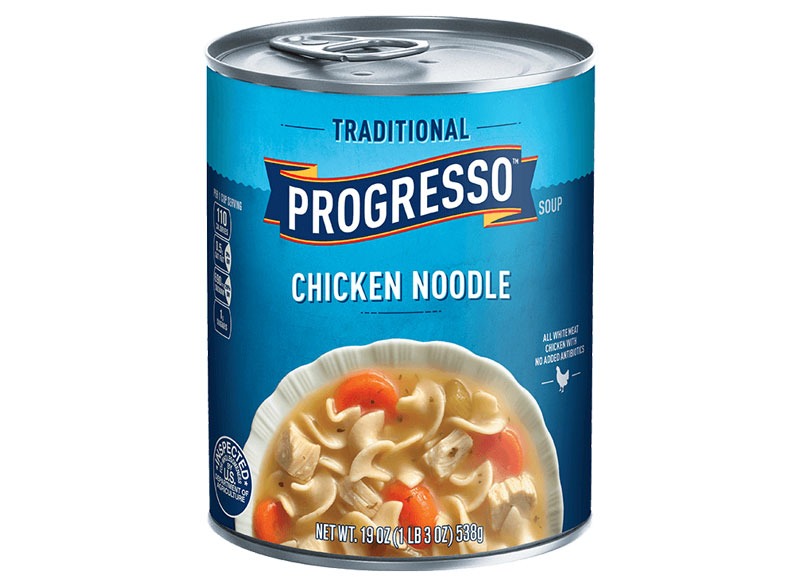
For Example: Progresso’s Chicken Noodle Soup
What they say you’re eating: 1 cup, 110 calories, 2.5 g fat (0.5 g saturated fat), 690 mg sodium, 14 g carbs (1 g fiber, 1 g sugar), 7 g protein
What you’re probably eating: 1 can, 220 calories, 5 g fat (1 g saturated fat), 1,380 mg sodium, 28 g carbs (2 g fiber, 2 g sugar), 14 g protein
Realistic portion sizes can uncover the underlying nutritional issues for even seemingly harmless picks, like unjustified amount of sodium in a can of this chicken noodle soup. Most canned soups, like Progresso’s above, suggest that each can holds two servings. That’s perfect if you’re setting the table for two, but if you’re looking to make yourself a warm bowl, you’re not likely to dish out half a can—especially considering the packaging isn’t really designed for multiple uses like a box with a snap lid or a glass can with a top would be. Instead, whip up one of these easy, 20 Best-Ever Fat-Burning Soup Recipes.
2-ounce Bags of Chips
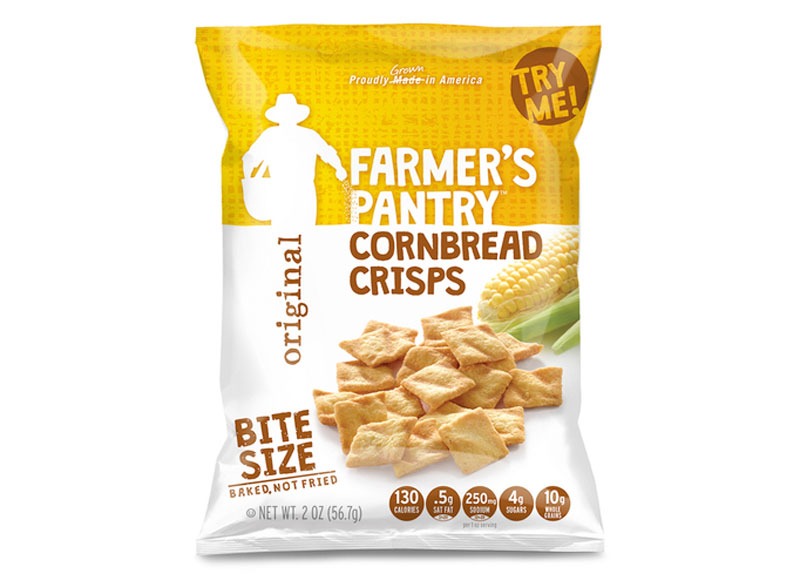
For Example: Farmer’s Pantry Cornbread Crisps
What they say you’re eating: 1 oz, 130 calories, 4.5 g fat (0.5 g saturated fat), 250 mg sodium, 20 g carbs (1 g fiber, 4 g sugar), 2 g protein
What you’re probably eating: 2-oz bag, 260 calories, 9 g fat (1 g saturated fat), 500 mg sodium, 40 g carbs (2 g fiber, 8 g sugar), 4 g protein
We’re suckers for some salty, crunchy chips as much as the next guy, but if you’re going to pick up a snack-size bag, make sure it’s the standard 1-ounce serving. It’s not just these cornbread chips; Anytime you buy a 2-ounce bag of snacks you’ll come across this dilemma of having two servings in a tiny bag. Even if you ate the serving size they recommend, which would be half the bag, the tiny thing doesn’t exactly fold up nicely to be stored for later. (And how many of us accidently rip an entire side off upon opening? How are we supposed to close that up?) The bag may not totally derail your diet if you ate the whole thing, but we’d rather the company show us information for what we’ll actually be eating.
Large Bottled Sodas
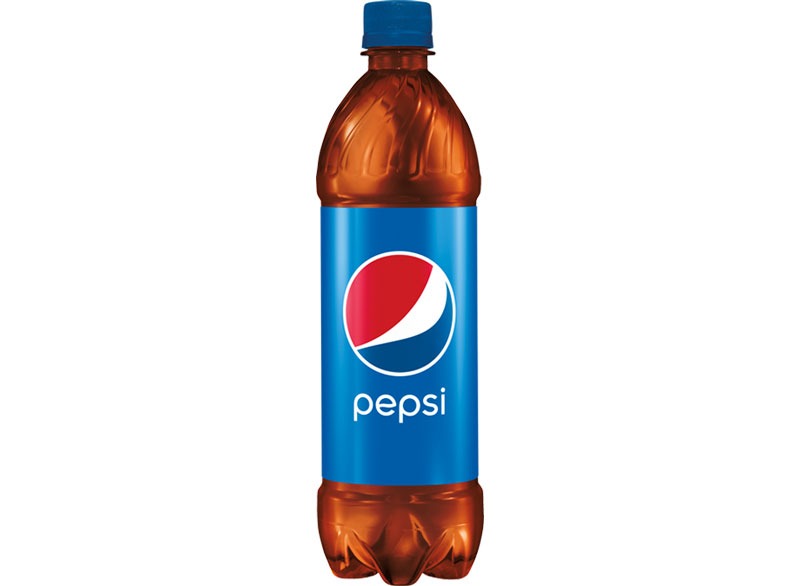
For Example: Pepsi 24-ounce Bottle
What they say you’re drinking: 12 oz, 150 calories, 30 mg sodium, 41 g carbs (41 g sugar)
What you’re probably drinking: 24-oz bottle, 300 calories, 60 mg sodium, 82 g carbs (81 g sugar)
With the new updated nutrition label, the FDA is also switching the previous standard soda serving size from 8 ounces to 12 ounces. On top of that, single serving packages of foods that weigh just under twice the standard serving size will be considered just one serving. So, a 20-ounce bottle of soda will have to be labeled as one serving. Even with these updates, Pepsi would still be allowed to market this 24-ounce bottle as repping two servings, but something tells us most people are buying this size for themselves, and not to share, which means they’ll be guzzling down close to two-days worth of added sugars, which the FDA has now set at 50 grams.
Granola
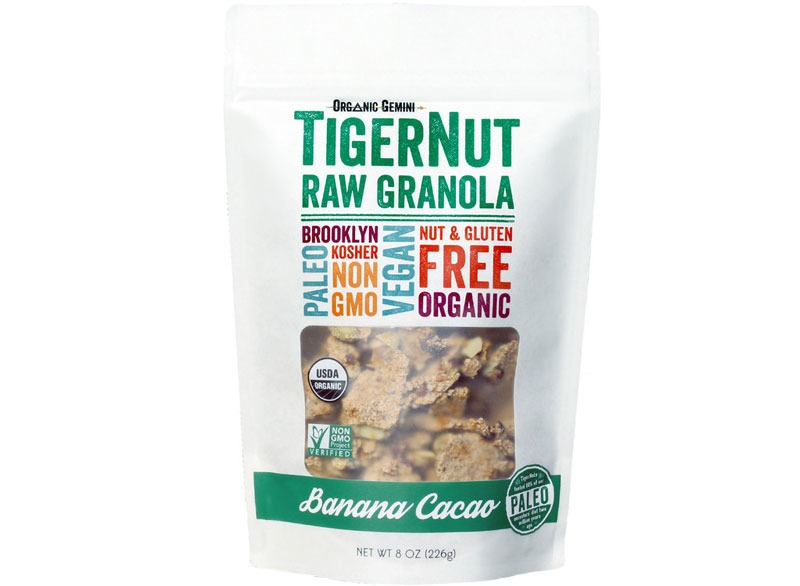
For Example: Organic Gemini TigerNut Raw Granola
What they say you’re eating: 2 oz, 330 calories, 14 g fat (4 g saturated fat), 5 mg sodium, 56 g carbs (14 g fiber, 37 g sugar), 5 g protein
What you’re probably eating: We have no idea, because who even knows what 2 ounces of granola looks like in the first place?
It’s always paired with protein-packed yogurt, so it must be healthy. Right? Wrong. Not all granolas are created equal. They might be full of whole grains and fiber, but they’re often glazed with more added sugars than we’d like to see, even if they’re natural sources like honey or maple syrup. What’s worse, proper portion sizes are hard to measure and stick to. Many granolas have a serving size of one-quarter cup—about 4 tablespoons—but Organic Gemini’s new raw granola is 2 ounces. So unless you’re willing to pull out a scale every time you eat to ensure you aren’t getting any more than the 37 grams of sugar this sweet mix serves up per serving, you might want to pass on the yogurt topper.
Health Bars
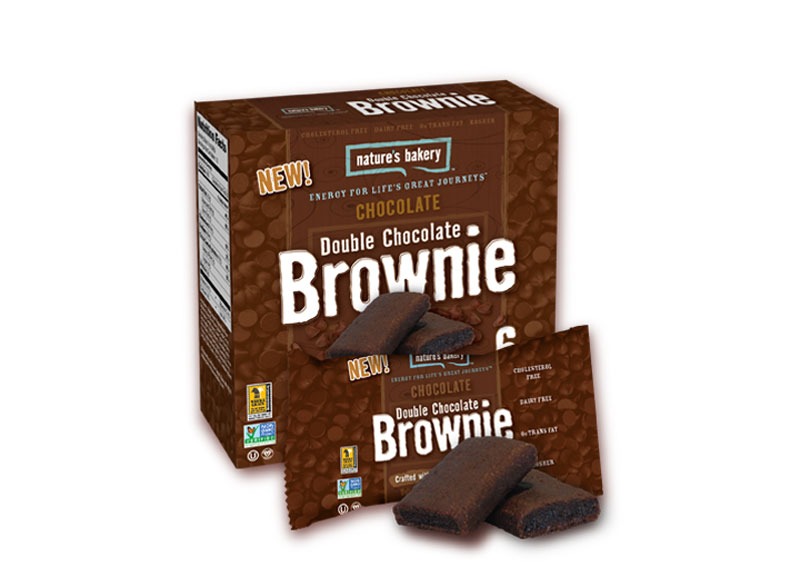
For Example: Nature’s Bakery Brownie Bars
What they say you’re eating: 1 oz, 90 calories, 2.5 g fat, 45 mg sodium, 18 g carbs (2 g fiber, 9 g sugar), 2 g protein
What you’re probably eating: 1 twin pack, 180 calories, 5 g fat, 90 mg sodium, 36 g carbs (4 g fiber, 18 g sugar), 4 g protein
Healthy brownies? Sign us up! Nature’s Bakery Brownie Bars are made with wholesome ingredients like whole wheat flour, dates, cocoa powder, and flax seed. The problem, though, is that they list the nutrition information for only one of the brownies in a twin pack. If you’re going to package two to a pack, you obviously intend the recipient to eat two. Doubling the information doesn’t uncover too many red flags—besides the dent in your added sugar intake—so we hope Nature’s Bakery will sensibly update their back panel to reflect both brownies as a serving. Or, only package them alone! Want to make your own healthy brownies at home? Here are our 20 Best-Ever Tips and Swaps for Healthy Brownies.
Pint of Ice Cream
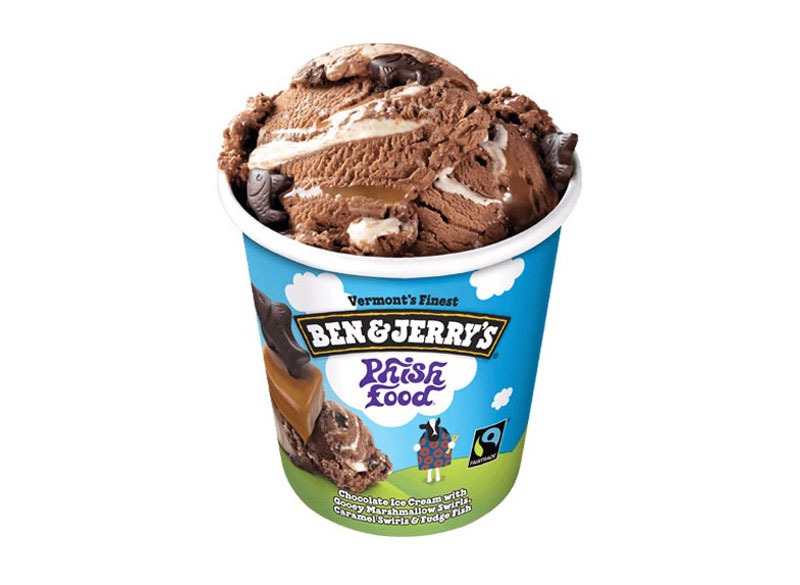
For Example: Ben & Jerry’s Phish Food
What they say you’re eating: ½ cup serving, 290 calories, 14 g fat (9 g saturated fat), 80 mg sodium, 38 g carbs (2 g fiber, 32 g sugar), 4 g protein
What the FDA thinks you’re eating: ⅔ cup, 383 calories, 18.5 g fat (12 g saturated fat), 106 mg sodium, 50 g carbs (3 g fiber, 42 g sugar), 5 g protein
What you’re probably eating: 2 cups (1 container), 1,160 calories, 56 g fat (36 g saturated fat), 320 mg sodium, 152 g carbs (8 g fiber, 128 g sugar), 16 g protein
No, ice cream isn’t a “health food,” but most nutrition labels camouflage the damage they can do to your waistline. And the FDA realized that. So, on the updated label, a serving size of ice cream will now be based on average consumption of 2/3 of a cup, rather than 1/2 a cup. And for smaller tubs, like all of Ben & Jerry’s pints, they’ll list labels with two columns: one to show serving information and the other for the whole container. And let’s be real. Who hasn’t “accidentally” eaten the entire pint before? And even if you haven’t, if you’ve ever grabbed a medium cup at an ice cream place, they’re typically equal to the same pint. When you do, you’re eating food with the equivalent amount of sugar as thirty-five Chips Ahoy cookies and 190 percent of your daily intake of saturated fats. Find out where your favorite B&J lies on our exclusive ranking of Every Ben and Jerry Flavor!
Sharing Size Candy
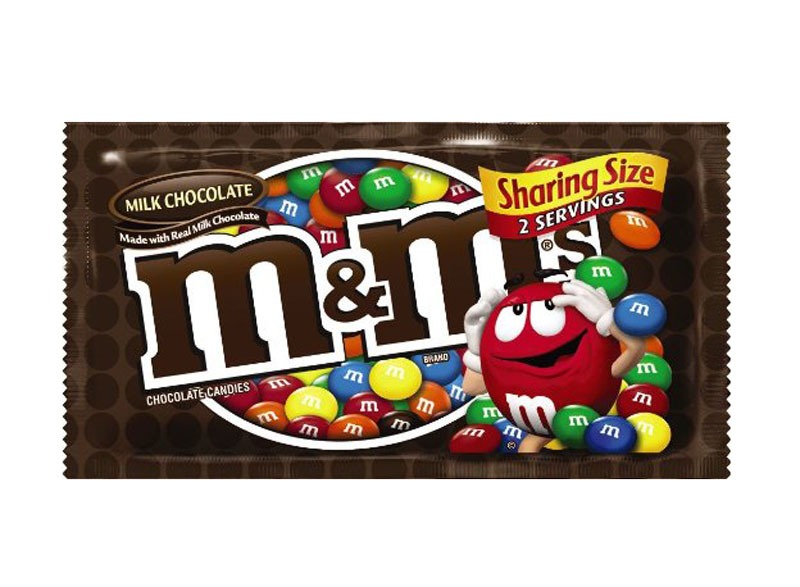
For Example: M&M’s Milk Chocolate Sharing Size
What they say you’re eating: ½ pack serving, 220 calories, 9 g fat (6 g saturated fat), 25 mg sodium, 32 g carbs (1 g fiber, 28 g sugar), 2 g protein
What you’re probably eating: 1 package, 440 calories, 18 g fat (12 g saturated fat), 50 mg sodium, 64 g carbs (2 g fiber, 56 g sugar), 4 g protein
Let’s be real: two hands definitely don’t fit into this tiny bag of M&Ms. In theory, this would be a great snack to share with a buddy during a movie, but once you get your hands on a packet, people rarely divide and conquer. So when you do eat the whole bag, you’ll be consuming over a day’s worth of added sugars, and as many calories and nearly as much fat as a McDonald’s double cheeseburger.
Breakfast Cereal
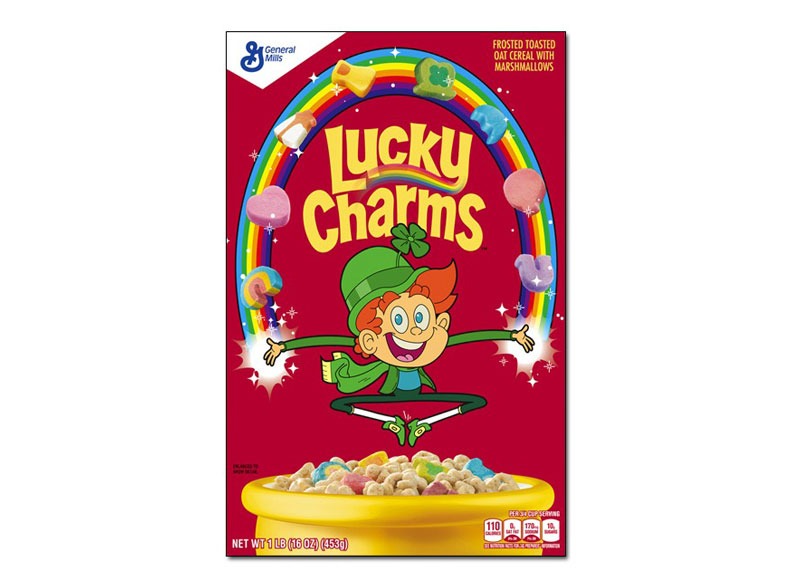
For Example: Lucky Charms
What they say you’re eating: ¾ cup serving, 110 calories, 1 g fat (0 g saturated fat), 170 mg sodium, 22 g carbs (2 g fiber, 10 g sugar), 2 g protein
What you’re probably eating: 1-½ cups, 220 calories, 2 g fat (0 g saturated fat), 340 mg sodium, 44 g carbs (4 g fiber, 20 g sugar), 4 g protein
Although cereal consumption has been on a decline recently, the boxed grain is still seen as a breakfast staple. But despite the interesting facts and fun mazes on the back of the box, have you ever really looked at the nutrition information? If you have, you’ve probably seen that many boxes only list ¾ cup as a serving size. That wouldn’t even fill up half of your average 2-cup bowl. This number may have reflected average consumption 20 years ago, but a recent study by the FDA showed that the average American typically eats 30 percent more cereal than the standard serving size. Unfortunately, the FDA has maintained the standard serving to be “30 grams” rather than a set cup size, which won’t fix the issue. So if your bowl of Lucky Charms—which is average on the sugar spectrum for cereals—consists of 1-½ cups, you could be starting your day with 40 percent of your daily sugar intake.
Nuts
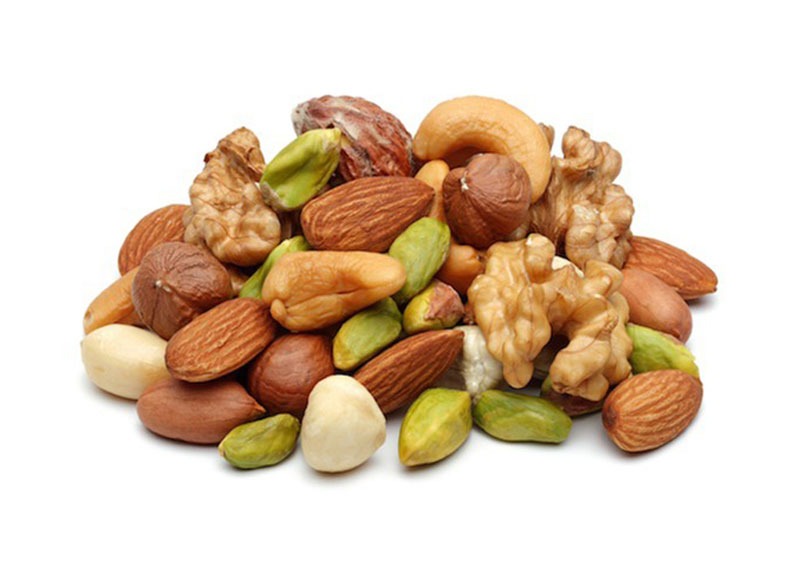
For Example: Walnuts vs. Pistachios
A 1 ounce serving of walnuts: 14 walnut halves, 185 calories, 18.5 g fat (1.5 g saturated fat), 1 mg sodium, 4 g carbs (2 g fiber, 1 g sugar), 4 g protein
A 1 ounce serving of pistachios: 49 shelled pistachios, 159 calories, 13 g fat (1.5 g saturated fat), 0 mg sodium, 8 g carbs (3 g fiber, 2 g sugar), 6 g protein
Nuts are packed with protein and heart-healthy mono and polyunsaturated fats, making them a fantastic source of energy and great on-the-go snack. But the serving sizes can be a bit confusing when switching between nuts. That’s because the standard serving size is 1 ounce across the board, but because nuts are different sizes, the number you eat can widely vary among types. One of the largest discrepancies is between walnuts and pistachios. So while one day you can find yourself eating nearly 50 little green nuts, if you did the same with the heart-shaped nut, you’d be setting yourself back over 55 grams of fat—too much for a single sitting. So while these aren’t labeled incorrectly, it’s still a serving you should look out for when delving into a homemade trail mix.
Condiments & Dressings
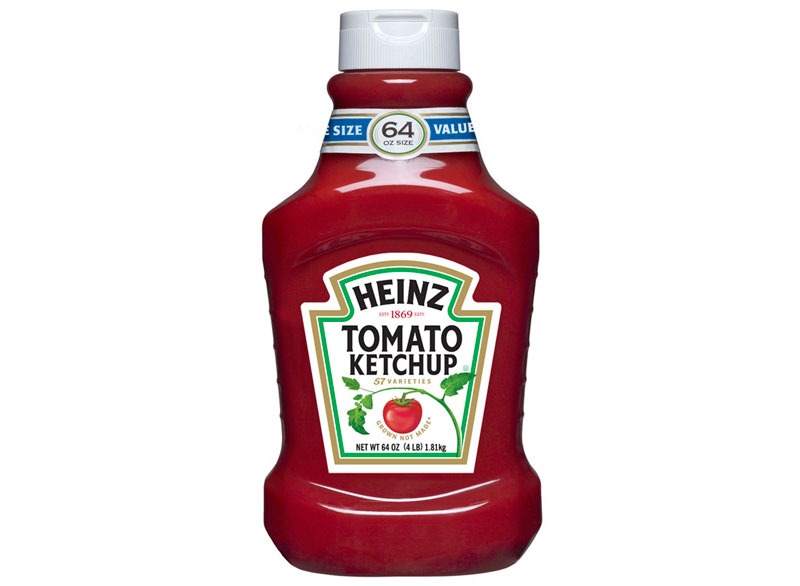
For Example: Heinz Ketchup
What they say you’re eating: 1 tbsp serving, 20 calories, 0 g fat, 160 mg sodium, 5 g carbs, 4 g sugar, 0 g protein
What you’re probably eating: 3 tbsp, 60 calories, 0 g fat, 480 mg sodium, 15 g carbs, 12 g sugar, 0 g protein
A little on the burger here, a little on the fries there—oh and one more squirt for dipping. If a meal needs ketchup, it’s pretty likely you’re going to douse it on without restraint. And that means you’re likely to consume more than a single tablespoon. Yes: One. Tablespoon. Serving sizes for condiments—which goes for ketchup, mustard, mayonnaise, and barbecue sauce along with bottled dressings like ranch and thousand island—are wildly underestimated. Especially since people typically don’t realize how much sugar is crammed into these dressings.
Toaster Pastries
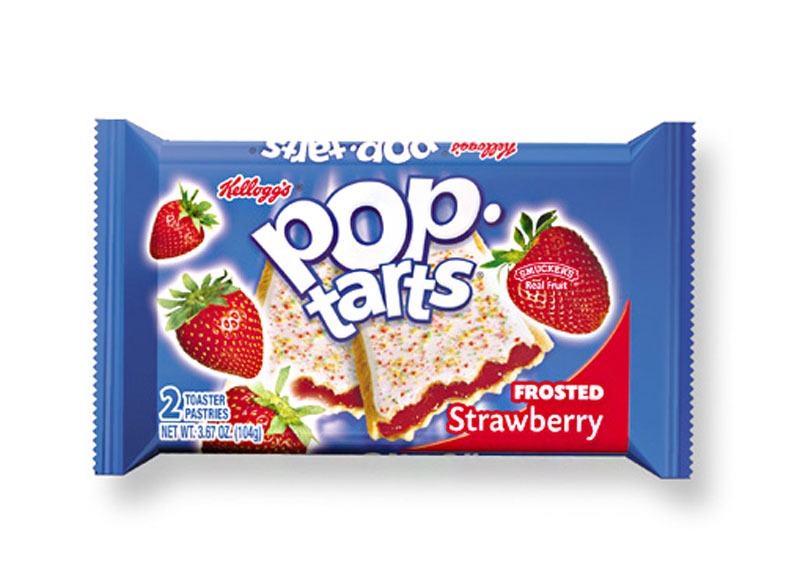
For Example: Kellogg’s Pop-Tarts Frosted Strawberry
What they say you’re eating: 1 pastry serving, 200 calories, 5 g fat (1.5 g saturated fat), 170 mg sodium, 38 g carbs (0 g fiber, 16 g sugar), 2 g protein
What you’re probably eating: 1 package (2 pastries), 400 calories, 10 g fat (3 g saturated fat), 340 mg sodium, 76 g carbs (1 g fiber, 32 g sugar), 4 g protein
They’re packaged two-to-a-pack, so what’s the point of only listing 1 pastry as a serving? Oh, probably because if they showed the entire pack boasted a whopping 32 grams of sugar and 400 calories, maybe moms would start to be wary about serving their kids these artificial-additive-laden sugar bombs. With the FDA’s updated label, the serving size for toaster pastries—as well as bagels and muffins—will increase from two to four ounces. When it comes to picking a breakfast treat, we know it can be difficult. Pass on the pop-tarts, and then check out How to Choose The Best Breakfast For Your Body Goals.
Personal Frozen Pizzas
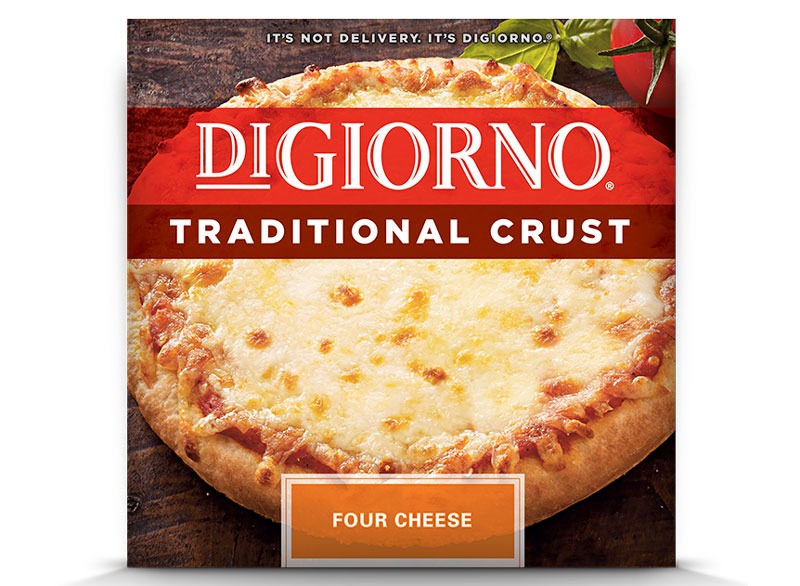
For Example: Digiorno Personal Four Cheese Traditional Crust Pizza
What they say you’re eating: ½ pizza serving, 340 calories, 14 g fat (7 g saturated fat), 580 mg sodium, 41 g carbs (2 g fiber, 6 g sugar), 12 g protein
What you’re probably eating: 1 personal pizza, 710 calories, 29 g fat (14 g saturated fat), 1,190 mg sodium, 88 g carbs (4 g fiber, 12 g sugar), 25 g protein
If you’re going to call a pizza personal, give a person the nutritionals for the whole pie! Instead, Digiorno lists ½ a pizza as a serving—who eats half a pizza? This personal pie is undone by thick crusts and excess cheese. And if you eat the whole thing, you’re reaching 75 percent of your saturated fat intake for the day, along with nearly half your recommended sodium intake. If you want to indulge in pizza, opt for a slice with a side salad.
